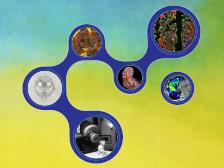
Advancements in Clinical Brachytherapy
Target Audience
This continuing medical education activity is designed to meet the interests of radiation oncologists, radiation oncology residents, radiation biologists, radiation physicists, dosimetrists, oncologists working in related specialties, radiation therapists, radiation oncology nurses, radiation oncology administrators, diagnostic radiologists and all other health professionals involved in the field of radiation oncology.
Learning Objectives
After this session, attendees should be able to:
- Demonstrate how volumetric imaging impacts plan quality and potential treatment outcomes in HDR brachytherapy.
- Understand the effect of tissue heterogeneity in dose calculation and learn model-based dose calculation methods (e.g. Collapsed-Cone, Grid-based Boltzmann Solve).
- Discuss the potential benefit of custom designed applicators and personalized implantation of interstitial catheters in volumetric brachytherapy.
The American Society for Radiation Oncology (ASTRO) is accredited by the Accreditation Council of Continuing Medical Education to provide continuing education to physicians.
ASTRO is awarded Deemed Status by the American Board of Radiology to provide SA-CME as part of Part II Maintenance of Certification.
Available Credit
- 1.25 SA-CME
The American Society for Radiation Oncology (ASTRO) is accredited by the Accreditation Council for Continuing Medical Education to provide continuing medical education for physicians. ASTRO designates this Live activity for a maximum of 1.25 AMA PRA Category 1 Credit™. Physicians should claim only the credit commensurate with the extent of their participation in the activity.
This activity meets the American Board of Radiology's criteria for a self-assessment activity in the ABR's Maintenance of Certification program. Participation in this course in combination with the successful completion of the corresponding assessment and course evaluation adheres to the guidelines established by the ABR for 1.25 self-assessment credits.

 Facebook
Facebook X
X LinkedIn
LinkedIn Forward
Forward